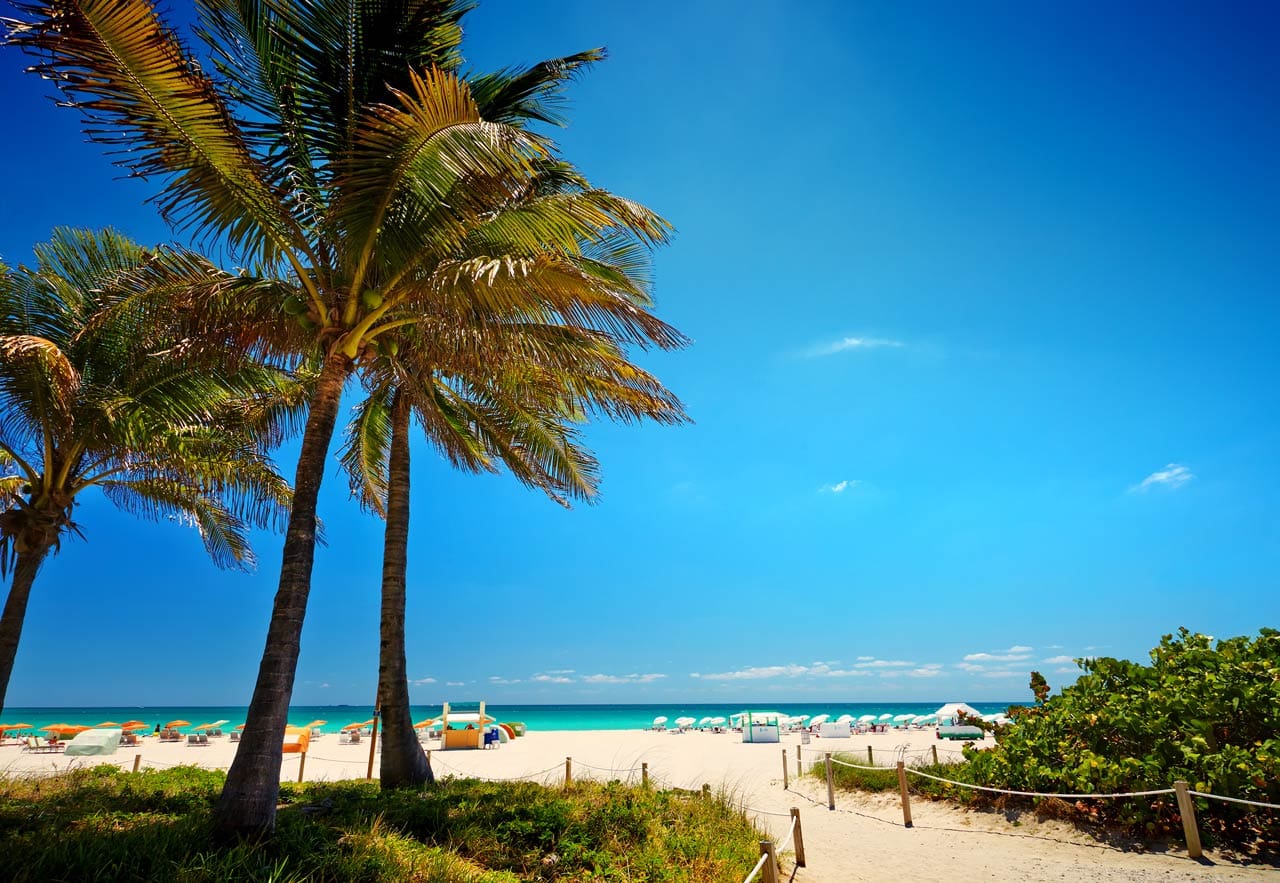Welcome to the vibrant city of Miami, where the sun shines year-round and a tropical paradise awaits. Known for its stunning beaches, dynamic culture, and thrilling nightlife, Miami offers an unparalleled experience to its visitors and residents alike. Today, we will explore the captivating and diverse climate of Miami throughout the year, from its hot and humid summers to its balmy winters. Prepare to be captivated by the magic of Miami’s ever-changing weather!
 Photo by Olena Boronchuk / Shutterstock.com
Photo by Olena Boronchuk / Shutterstock.com
1. The Allure of Year-Round Sunshine
Miami’s climate boasts an enviable feature that many other cities envy – its abundant sunshine. With an average of 248 sunny days per year, Miami invites you to embrace the outdoors and soak up that vitamin D. Whether you’re strolling along the iconic Miami Beach or exploring the lush greenery of the city’s parks, the sun’s warm embrace will be your constant companion.
2. The Subtropical Climate of Miami
Miami’s climate falls into the subtropical category, characterized by its seven-month-long hot season and a shorter, cooler season. From May to October, you can expect tropical temperatures, high humidity, and the possibility of afternoon thunderstorms. However, Miami’s climate also allows for an enjoyable winter season with mild temperatures, making it an ideal escape for those escaping colder regions.
3. Embracing the Summer Heat
Miami’s summers are renowned for their sizzling temperatures and high humidity. From June to September, expect daily highs ranging from the upper 80s to the low 90s Fahrenheit (around 30-35 degrees Celsius). The combination of heat and humidity can make it feel even hotter, but rest assured, Miami has plenty of ways to keep cool. Take a refreshing dip in the Atlantic Ocean, explore the city’s numerous indoor attractions, or enjoy a refreshing drink poolside. This season is perfect for taking pleasure in the city’s sights while aboard a boat or yacht.
4. Surviving the Rainy Season
Miami’s summer months also bring with them the rainy season, which typically lasts from May to October. While it may sound daunting, these afternoon showers are often short-lived and can provide a welcome respite from the heat. Be sure to pack an umbrella or poncho if you’re out and about during these times, as the sudden downpours can catch you off guard. However, don’t let the rain dampen your spirits – embrace the chance to experience Miami’s unique charm in a different light.
5. Welcome to Miami’s Mild Winter
One of the biggest surprises for visitors is Miami’s mild winter season. From December to February, temperatures range from the mid-60s to low 70s Fahrenheit (around 18-23 degrees Celsius). While snowbirds flock to Miami to escape colder climates, locals savor their version of winter, where outdoor activities and al fresco dining are still part of everyday life. Ditch your heavy coats and enjoy the delightful warmth of Miami’s winter sun.
6. The Delightful Spring and Fall Seasons
Spring and fall, also known as the transitional seasons, are excellent times to visit Miami, as they offer pleasant temperatures and lower humidity. From March to May and October to November, expect temperatures to range from the mid-70s to mid-80s Fahrenheit (around 24-30 degrees Celsius). These seasons provide the perfect climate for exploring the city’s outdoor attractions, enjoying picnics in parks, and immersing yourself in Miami’s vibrant festivals.
7. Packing Tips for All Seasons
When visiting Miami, packing appropriately for the climate is essential. For the hot summer months, pack lightweight, breathable clothing, plenty of sunscreen, a hat, and sunglasses. Don’t forget your swimsuit for enjoying Miami’s stunning beaches! In the cooler winter months, bring light layers, comfortable shoes for exploring, and a light jacket for cooler evenings. Always stay hydrated, regardless of the season, as Miami’s climate can be deceptively dry due to the ocean breeze.
8. Embracing Miami Year-Round
The magic of Miami’s year-round climate lies in its ability to offer something for everyone, regardless of the season. Whether you’re seeking outdoor adventures, cultural festivals, or simply relaxing in the sun, Miami’s climate provides the ideal backdrop. From water sports in the summer to exploring the city’s art scene in the winter, Miami’s ever-changing weather ensures a diverse and thrilling experience year-round.
To Put it Bluntly
Miami’s climate offers a tantalizing mix of sun-drenched summers, mild winters, and delightful transitional seasons. From sun-soaked beaches to invigorating cultural experiences, Miami’s weather is an integral part of its allure. So pack your bags, plan your trip, and embrace the enchantment of Miami’s year-round climate. There’s never a wrong time to visit this vibrant city, where amazing clubs, sunshine and adventure await at every turn.








